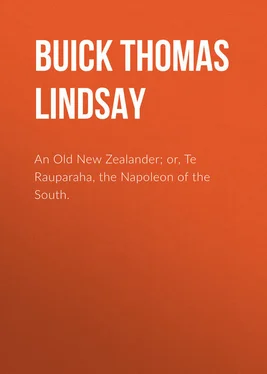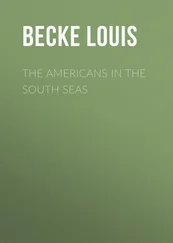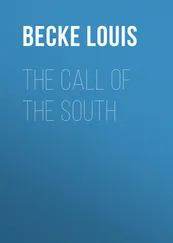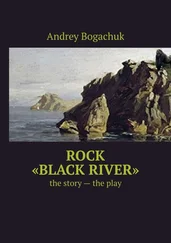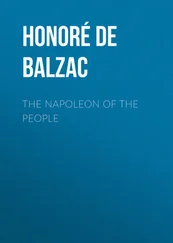Thomas Buick - An Old New Zealander; or, Te Rauparaha, the Napoleon of the South.
Здесь есть возможность читать онлайн «Thomas Buick - An Old New Zealander; or, Te Rauparaha, the Napoleon of the South.» — ознакомительный отрывок электронной книги совершенно бесплатно, а после прочтения отрывка купить полную версию. В некоторых случаях можно слушать аудио, скачать через торрент в формате fb2 и присутствует краткое содержание. Жанр: foreign_antique, foreign_prose, на английском языке. Описание произведения, (предисловие) а так же отзывы посетителей доступны на портале библиотеки ЛибКат.
- Название:An Old New Zealander; or, Te Rauparaha, the Napoleon of the South.
- Автор:
- Жанр:
- Год:неизвестен
- ISBN:нет данных
- Рейтинг книги:3 / 5. Голосов: 1
-
Избранное:Добавить в избранное
- Отзывы:
-
Ваша оценка:
- 60
- 1
- 2
- 3
- 4
- 5
An Old New Zealander; or, Te Rauparaha, the Napoleon of the South.: краткое содержание, описание и аннотация
Предлагаем к чтению аннотацию, описание, краткое содержание или предисловие (зависит от того, что написал сам автор книги «An Old New Zealander; or, Te Rauparaha, the Napoleon of the South.»). Если вы не нашли необходимую информацию о книге — напишите в комментариях, мы постараемся отыскать её.
An Old New Zealander; or, Te Rauparaha, the Napoleon of the South. — читать онлайн ознакомительный отрывок
Ниже представлен текст книги, разбитый по страницам. Система сохранения места последней прочитанной страницы, позволяет с удобством читать онлайн бесплатно книгу «An Old New Zealander; or, Te Rauparaha, the Napoleon of the South.», без необходимости каждый раз заново искать на чём Вы остановились. Поставьте закладку, и сможете в любой момент перейти на страницу, на которой закончили чтение.
Интервал:
Закладка:
In the meantime they had been joined by the Tokomaru canoe, and the joint crews decided upon the bold scheme of hauling their vessels over the narrow portage at Otahuhu. 10 10 Otahuhu signifies "ridge-pole." This portage is only 3,900 feet long and 66 feet high.
The Tokomaru was the first to be taken across, and under the guidance of the chiefs she glided with perfect ease and grace over the carefully laid skids into the deep, smooth water. But when the drag-ropes were applied to the Tainui, pull as they would, she remained fast and immovable. Tradition says that Marama-kiko-hura, one of Hoturoa's wives, being unwilling that the weary crews should proceed at once upon this new expedition, which the chiefs were evidently projecting, had by her power as an enchantress so rooted the canoe to the ground that no human strength could move it. Against this supernatural agency the stalwart boatmen struggled unavailingly, for, although there was a straining of brawny arms, a bending of broad backs, and much vocal emulation, inspired by the lusty commands of those in authority, the charm of the enchantress could not be broken. In this distressful emergency the womanly sympathy of a second wife of the chief was stirred within her, and she, being even more gifted in the art of magic than her sister, chanted an incantation so great in virtue that instantly the spell was loosed and the wicked work of a disappointed woman undone. 11 11 There are different versions of this tradition, some attributing the transfixing of the canoe to Marama, others crediting her with releasing it. The version given in the late Sir George Grey's Polynesian Mythology has been here adopted.
The song which was chanted on this memorable occasion has long since been embalmed amongst the classics of the Maori, and has become the basis of many another chant which is used while canoes are being drawn down to the sea.
"Drag Tainui till she reaches the sea:
But who shall drag her hence?
What sound comes from the horizon?
The Earth is lighting up,
The Heavens arise,
In company with the feeble ones
Welcome hither! Come, O joyous Tane!
Thou leader and provider.
Here are the skids laid to the sea,
And drops the moisture now from Marama,
Caused by the gentle breeze
Which blows down from Wai-hi;
But still Tainui stays,
And will not move.
Red, red is the sun,
Hot, hot are its rays,
And still impatient stands the host:
Take ye and hold the rope,
And drag with flashing eyes
And drag in concert all.
Rise now the power
To urge. She moves and starts,
Moves now the prow,
Urge, urge her still."
Under the exhilarating influence of the singer's musical voice, together with a profound faith in her skill as a mistress of magic, the weary crews once more bent themselves to their task. Their renewed efforts were rewarded with success; for with one vigorous pull the canoe was seen to move, and was soon slipping and sliding on her way to the bosom of the bay below. 12 12 Some authorities are of opinion that the Tainui was not taken across the portage at Otahuhu (ridge-pole), and they base this contention upon the fact that no traditional marks have been left inside the Manukau harbour. All the points of interest which have been handed down, and are remembered, are on the sea coast; and from this circumstance it is argued that the canoe was never in Manukau harbour at all. Others say that some of the skids of Tainui were left at South Manukau Heads.
Once fairly launched, the Tainui was soon speeding her way to the open sea; and, having successfully crossed the Manukau bar, she passed out into the Western Ocean to battle with adverse winds and tides. Evidently, the physical features of this coast were not greatly to the liking of the explorers. Unlike the eastern side of the island, there were fewer shelving beaches and favourable landing-places; the predominating aspect was high and abrupt cliffs, fringed with jagged and evil-looking rocks, against which the surf beat with deafening roar. The sea, too, was much more turbulent; so that, after travelling only some eighty miles, the canoe was headed for the sheltered harbour of Kawhia, 13 13 As they were passing the mouth of the Waikato, the priest of the canoe, noticing that the river was in flood, named it by calling out " Waikato, Waikato, kau ." Further on, noticing that there were no landing-places, he threw his paddle at the face of the cliff and exclaimed, " Ko te akau kau " (all sea coast). The paddle is said to be still embedded in the face of the rock, and is one of the traditional marks by which the course of the Tainui can be traced. At the entrance of Kawhia Harbour they ran into a shoal of fish, and the priest gave this haven its present name by exclaiming " Kawhia kau ." Another account is that the name comes from Ka-awhi, to recite the usual karakia on landing on a new shore, to placate the local gods.
and there Hoturoa and the tribes who accompanied him determined to bring their wanderings to an end.
The canoe which had brought them safely over so many miles of open ocean was hauled to a secure spot on the beach, there to await the ravages of decay, the spot where she rested and finally rotted away under the manuka and akeake trees being still marked by two stone pillars, 14 14 The distance between these stones is 86 feet, indicating the probable length of the Tainui canoe.
which the natives have named Puna and Hani. The next thing was to erect an altar to the gods for having thus far prospered their journey. The spot chosen was that afterwards called Ahurei, in memory of their old home in Tahiti; 15 15 Now called Te Fana-i-Ahurei (or, in Maori, Te Whanga-i-Ahurei, the district of Ahurei).
and, doubtless for the same sentimental and patriotic reason, the spot on which the wives of Hoturoa first planted the kumara 16 16 The Tainui brought the species of kumaras known as Anu-rangi (cold of heaven) and the hue or calabash. Those planted by Marama did not come up true to type, but those planted by Whakaoti-rangi, another of the chief's wives, did.
was called Hawaiki. With these preliminaries settled, the pilgrims from the east were now faced with the most serious duty of all, to arrive at an equitable division of the new land which was about to become their permanent home. What method of adjudication was employed in the apportionment we cannot now say; but two main divisions mark the final arbitrament. The Waikatos occupied the country from Manukau in the north to the Marokopa River in the south, while the tribe afterwards known as Mania-poto occupied a domain which extended from that point to one about two miles south of the Mokau River. Within these comprehensive boundaries was embraced the acknowledged territory of the numerous sub-tribes; but to only two of these need we refer at this stage, namely, to the Ngati-toa, who lived on the shores of Kawhia Bay, and to the Ngati-Raukawa, who had settled further inland, in the country of which Maungatautari is now the centre.
When the Tainui people landed on the shores of Kawhia and began to spread their settlements throughout the valleys of the district, they did not find, as they might have expected, an empty land. At some time, and by some means, man had already established himself in New Zealand, and before the organised migration, of which the Tainui was a part, had set sail from Rarotonga, the country was already extensively peopled. Whether these tangata whenua , as the Maoris called them, were Polynesians like themselves, and the fruits of some of the prior migrations which are known to have taken place, or whether they were a lower order of mankind struggling through the process of evolution to a higher plane of civilisation, is a point which cannot well be debated here. But whatever manner of men they were who lived in the balmy climate of Kawhia, they were already well established there in their villages and gardens, and for many generations – perhaps for many centuries – they had been burying their dead in the secret caves which honeycombed the limestone cliffs that rise in beetling precipices sheer from the harbour's edge. Although they are generally credited with being a less combative and virile race than the fierce and hardy tribes who came with the fleet, they were not disposed to surrender or divide their estate without a struggle, and Hoturoa found that, if he was to become master of Kawhia, it could only be as the outcome of a successful war. But Kawhia was a country worth fighting for. Early travellers through New Zealand, who saw it before the devastating hand of man had marred its beauties, speak with eloquent enthusiasm of its extremely picturesque and romantic landscape. 17 17 "I reckon this country among the most charming and fertile districts I have seen in New Zealand" ( Hochstetter ).
At full tide the harbour shines in the sunlight like an unbroken sheet of silver, in which the green and gold reflections of the surrounding bush are mirrored and magnified. For many miles in length and breadth the sea runs inland from the bay's bar-bound mouth, stretching its liquid arms right to the base of the mountains which encircle the harbour like a massive frame. Rugged and picturesque are these mountains, with their cloak of deep verdure, through which huge masses of limestone rock protrude their white faces, suggesting the bastions of some old Norman tower covered with gigantic ivy. So marked, in fact, is this resemblance, that the character of the peaks has been preserved in their name – the Castle Hills. 18 18 The natives call them Whenuapo.
Down the sides of these slopes run innumerable streams, the largest being the Awaroa River, which enters the harbour at the north-east end, where the scenery attains its most impressive grandeur. A little to the north-east of Kawhia, and over the ranges, lies the broadly-terraced valley of the Waipa, and between this district and the harbour stands "an ancient and dilapidated volcano," called Pirongia, upon which the evening sun directs its blood-red darts, lighting up its many peaks and towers until they resemble a giant altar raised by some mighty priest. The climate, too, is mild and soft, like that of Southern Spain, and there the orange and the lemon might bud and blossom with all the luxuriance found in the valleys of Granada.
Интервал:
Закладка:
Похожие книги на «An Old New Zealander; or, Te Rauparaha, the Napoleon of the South.»
Представляем Вашему вниманию похожие книги на «An Old New Zealander; or, Te Rauparaha, the Napoleon of the South.» списком для выбора. Мы отобрали схожую по названию и смыслу литературу в надежде предоставить читателям больше вариантов отыскать новые, интересные, ещё непрочитанные произведения.
Обсуждение, отзывы о книге «An Old New Zealander; or, Te Rauparaha, the Napoleon of the South.» и просто собственные мнения читателей. Оставьте ваши комментарии, напишите, что Вы думаете о произведении, его смысле или главных героях. Укажите что конкретно понравилось, а что нет, и почему Вы так считаете.
